
 |
|
#11
|
|||||
|
|||||
|
egads. I just worked out how much I've spent on this thing.
$1137.00 all in, that's if I don't count the two open brains that were rescued from my big tank in to it. |
|
#12
|
|||||
|
|||||
|
Sold two corals that weren't working for this tank. I had the intention of replacing one of them with an insanely coloured scoly or something, but the really nice ones are like $250 bucks, which is insane. So instead I picked up a couple of tiny little corals that I think are maybe fungids? I also took an acan frag that was getting bleached in my big tank and not growing moved it in and fragged (more like butchered) my small colony of red and green Aussie blastos to put a small piece in the little tank. It looks a little emptier now, but the corals in here will all grow and fill in and the whole thing will be much more colourful.
I did have a mishap taking the rock structure out to attach all the new stuff though... the top tier broke off (I mean it's just super glued together) and the bottom half landed hard face down in a bucket, splashing about a gallon of water on my floor and seriously damaging my two brains. I was afraid I'd killed them, but the injuries seem to have sealed up and they're fully extended today.  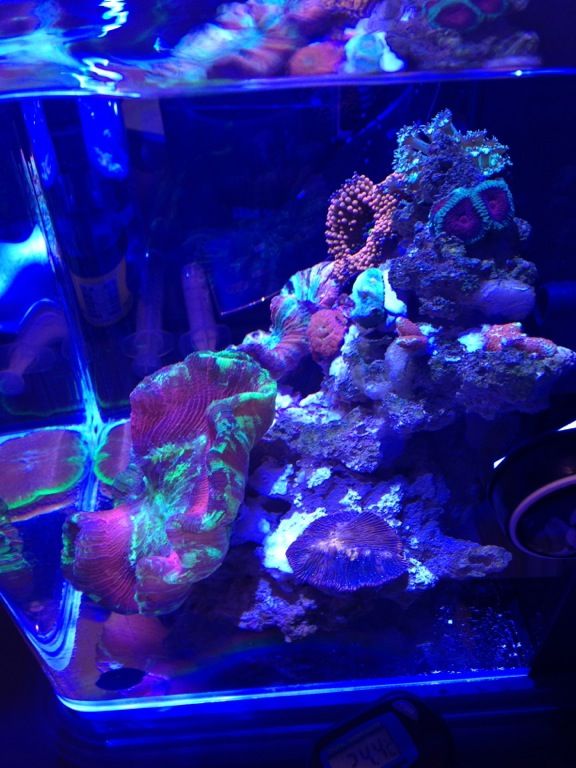 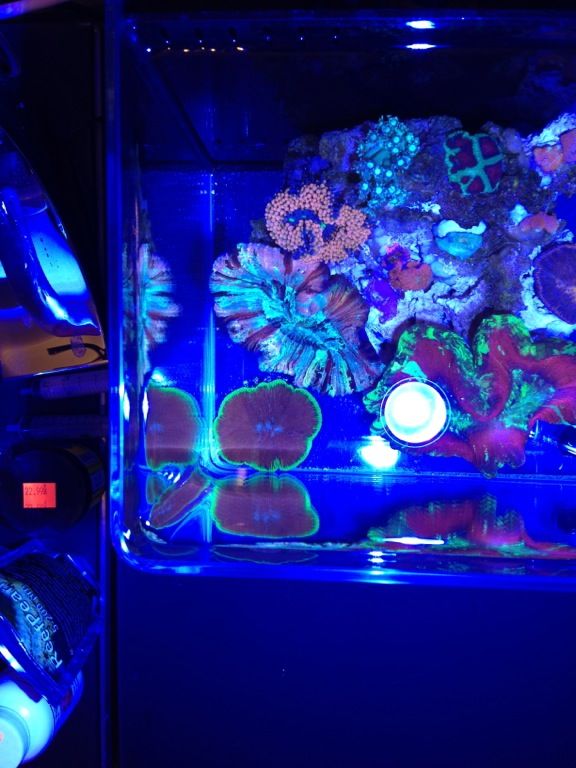 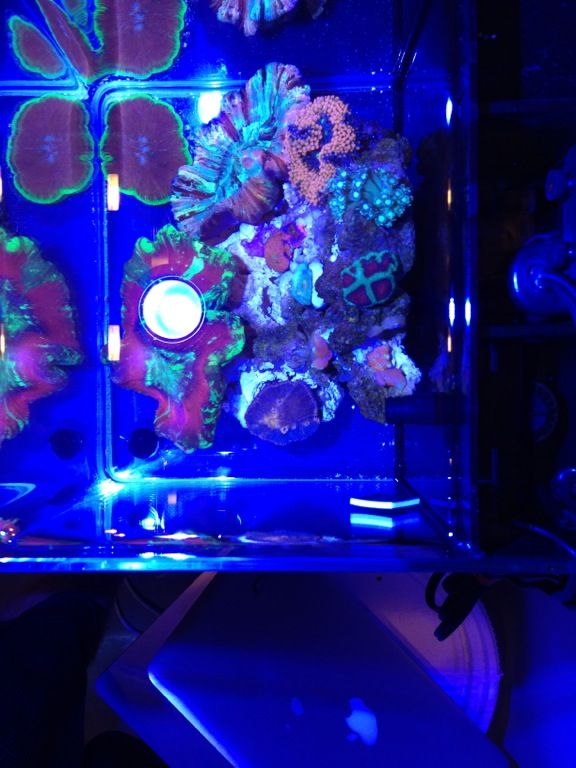 |
|
#13
|
|||||
|
|||||
|
Just looking at some old photos. I know I've posted these before but I never looked at them side by side before. All I have to say is WOW, did I ever get a good deal. I got this open brain for maybe 60 bucks because it was ugly as sin when I bought it. All this time reefing and I still had no idea what good water and good lighting could do for an LPS coral. I can't believe how much this guy has improved.
First picture (coral is bottom left) is pretty true to how it looked when I got it, browned out, muted, dull. I bought it because it was cheap but it still had a kaleidoscope of colours, even though they were all really drab. Second two pictures (mid left) barely captures how nice it is now because it's so brilliant and luminescent that it + LEDS reeks havoc on my phone's sensor. It's spectacular. Yes it's that teal blue in real life, and it also has gold in it that doesn't get picked up in the picture at all. Love this coral. 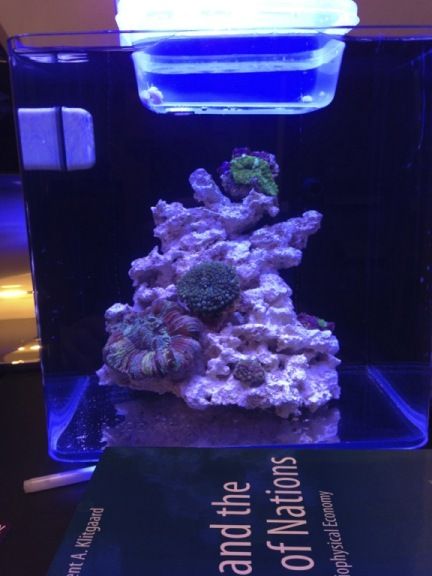   |
|
#14
|
||||
|
||||
|
sweet little tank!
thumbs up for the bare bottom |
|
#15
|
|||||
|
|||||
|
So I got in a bit of a forum debate over the merits vs the risks of a 100% water change in a reef system. I obviously am of the belief that they are a good thing and are a totally legitimate method for maintaining a reef. There is another school of thought out there that believes that massive to 100% water changes mess with the 'constancy' of a system and can 'shock' it in some way, and should therefore always be avoided.
My theory is this - the term 'shock the system' is vague, and as far as I can tell, there's no operational definition for exactly what it means. The same way that people talk about 'toxins' in our bodies, I find the language surrounding a lot of the things in the aquarium trade to sound more like pseudo-scientific superstition than anything that's really happening. Since, in my opinion, being intangible and having no visible or testable effects is the same as not existing at all, I will define the term 'shock the system' to mean some sort of tangible deleterious effect on the health of a coral, and/or the disruption of bacterial metabolism to a large enough degree to cause system instability, as I believe that's what people who speak in these terms are generally referring to. Those two things are testable - coral health is directly observable both in the behaviour and growth of a coral, and the functioning of a bacterial bed is indirectly observable via the processing of nitrogenous compounds. Two things have been suggested - 1. That the difference in parameters between the discarded water and the new water will be significant 2. That this difference will harm either the corals, or 'things we can't see', ie, the bacteria. Here's how I'm going to test this: 1. I've never tested my pico for anything other than salinity and temp, so I'm going to test the major parameters both before and after a water change. 2. I'm then going to document the corals over the course of a week in photos, and use old photos/photos in this thread as historical comparisons 3. I'm also going to feed each one of my corals either a meaty food if they can accept it, or a Acans plus/Coral Frenzy mixture as soon as they'll accept it after the water change. I'd normally wait a few days to feed to try and max out the low N and P levels of my change water. I'll feed the corals again a few days later 4. I'll test ammonia daily for the week following the water change. I am expecting to see a difference in the major ions between the old and the new, as I don't dose them via any method other than water changes. I'm also not expecting those differences to cause any sort of damage, either to the macro inhabitants, or the micro inhabitants. But we shall see, I'll happily eat my words if I'm wrong. |
|
#16
|
|||||
|
|||||
|
Quote:
 http://reefbuilders.com/2013/05/21/f...lems-95-water/
__________________
You wouldn't want to see my tank. I don't use fancy equipment and I am a noob  |
|
#17
|
|||||
|
|||||
|
lol, I used that exact same example in my debate...
Well, here's the first round of parameters and pics: It had been about 10 days since the last water change. I do not dose anything. Immediately before the water change: dKh: 6.4 (this is much lower than I was expecting!) Calcium: 340ppm (also, Much to low!) Magnesium: about 1300ppm Temp: 24.8 Ammonia: undetectable Nitrite: Undetectable Nitrate: didn't test Phosphate: didn't test Here's the tank before the water change  I won't put detail shots of all the corals, but note how much the colours in the two brains have improved compared to earlier images in this thread: 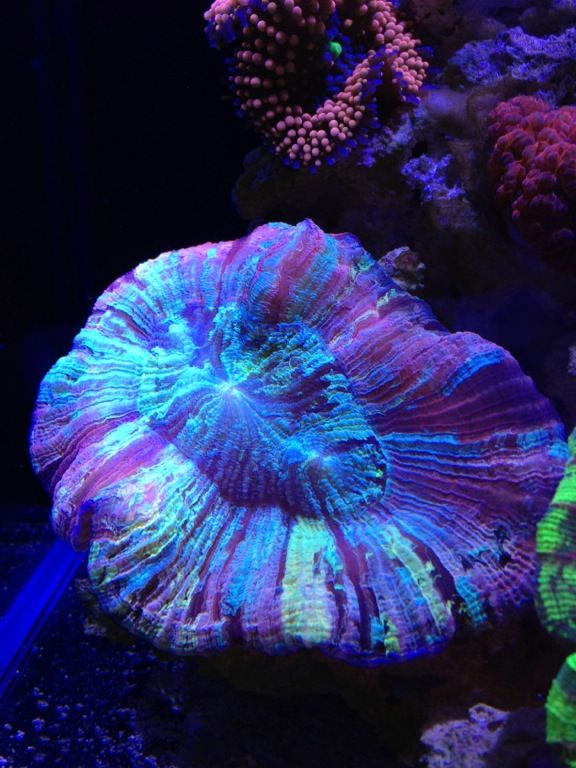 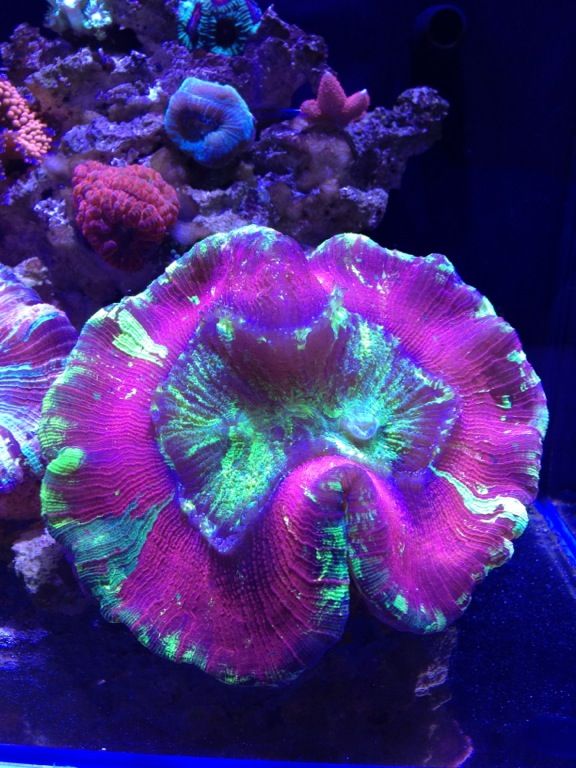 Also note that the christmas favia (I think) has noticeably started plating polyps on to the rock: 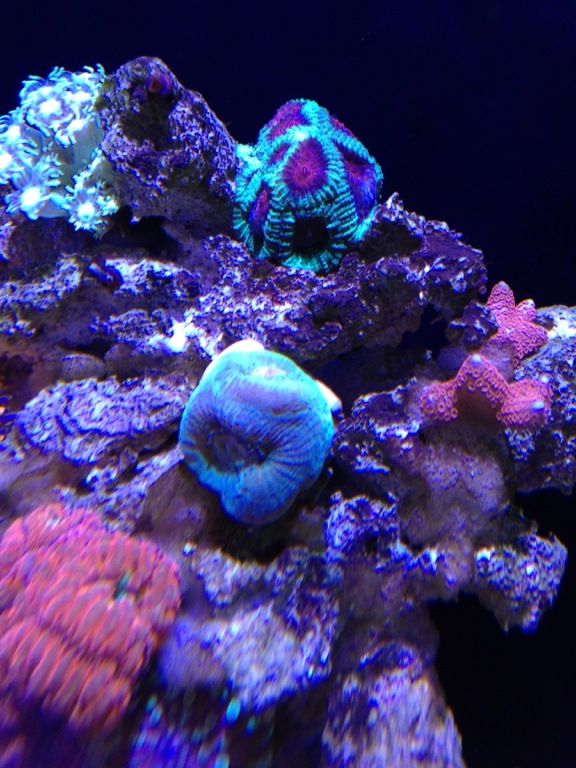 The ricordia has about 3 mouths, I'm waiting for it to split, and I had mangled that blasto fragging to the point where I didn't think it would survive. It had one intact head, and 2 heads that were just chunks of torn flesh. It's recovered nicely.  The last of those pics was taken at 1:02pm, I shut everything off and started draining immediately Here's it empty: 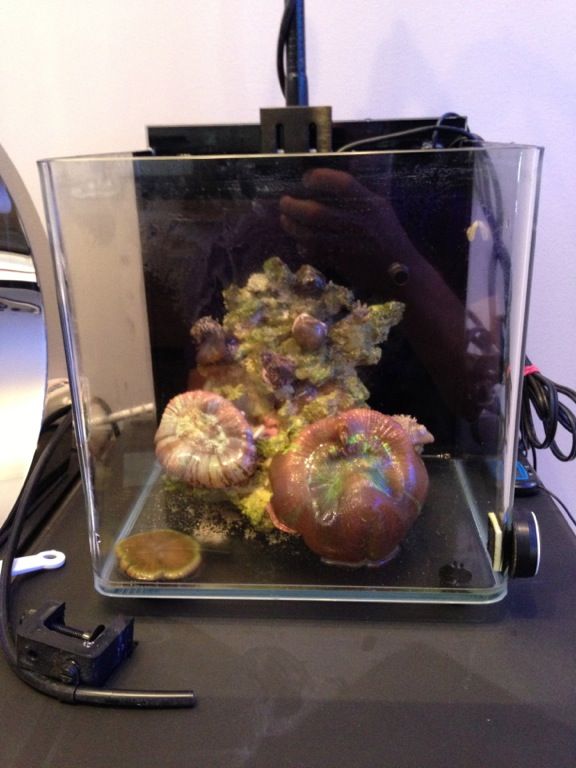 and I drained it completely, also exposing the ceramic borings 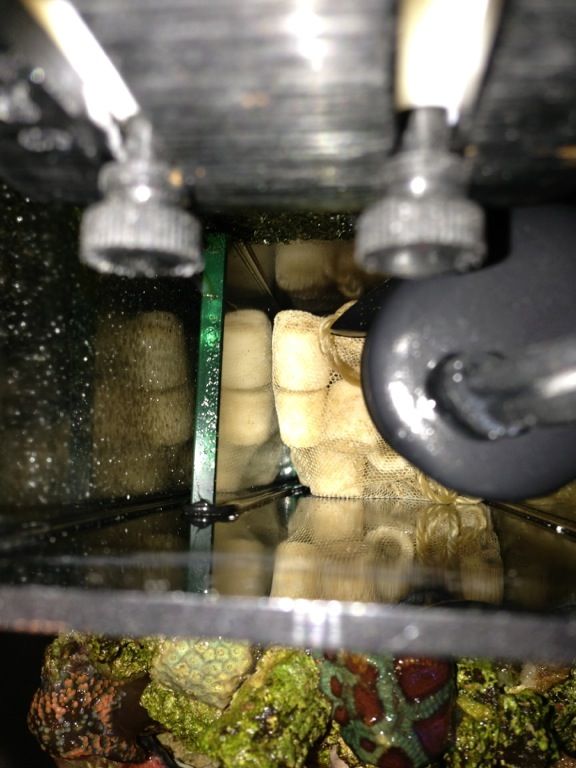 Those pics were taken at 1:09, right before I went in the garage to get the new water, so the tank was empty for 7-10 minutes. Here's the tank immediately after the water change 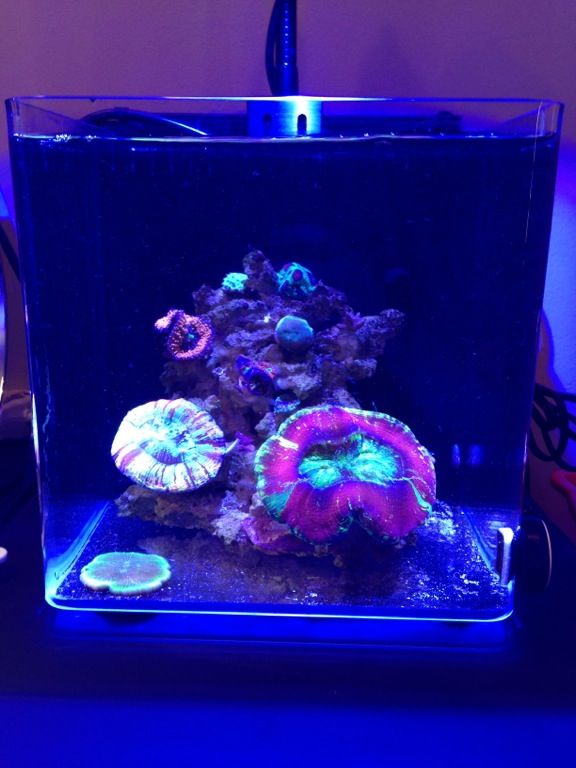 |
|
#18
|
|||||
|
|||||
|
Post water change parameters:
dKH: 7.8 (this is actually making me think my test kit has gone off, when I tested the batch of water I'm using for water changes when I made it the dKH was closer to 9) calcium: 405ppm Magnesium: 1360ppm Temp: 23.2 Ammonia: undetectable Nitrite: Undetectable Nitrate: Didn't test Phosphate: didn't test oh I forgot to mention in the last post, SG before and after the water change was exactly 1.025 Here is the tank at 1:58pm, 51 minutes after every coral in this tank was high and dry: 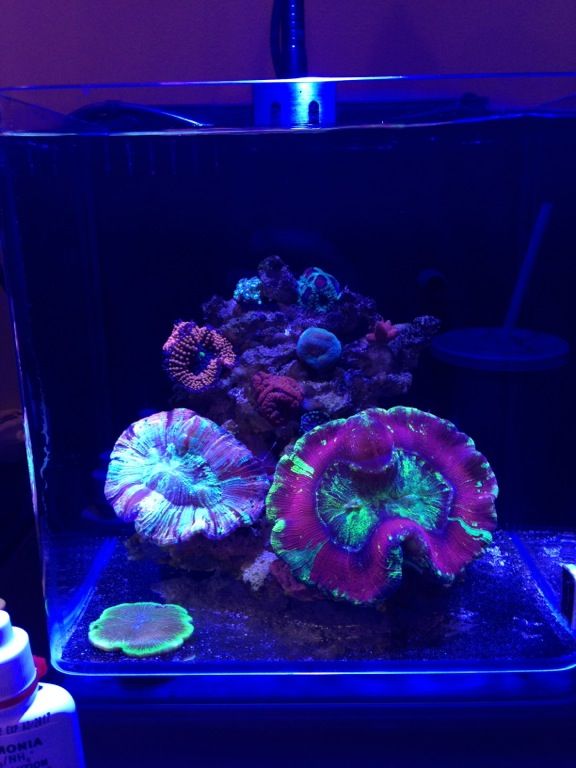 Only the goniopora has yet to fully re-inflate. I had to go out and pick up furniture right after this, so I didn't get a chance to feed until 7:40, 20 minutes before the lights go out on this tank. I fed a mixture Coral Frenzy and AcansPlus mixed in a dish with 10ml of water so that it formed a relatively thick paste: 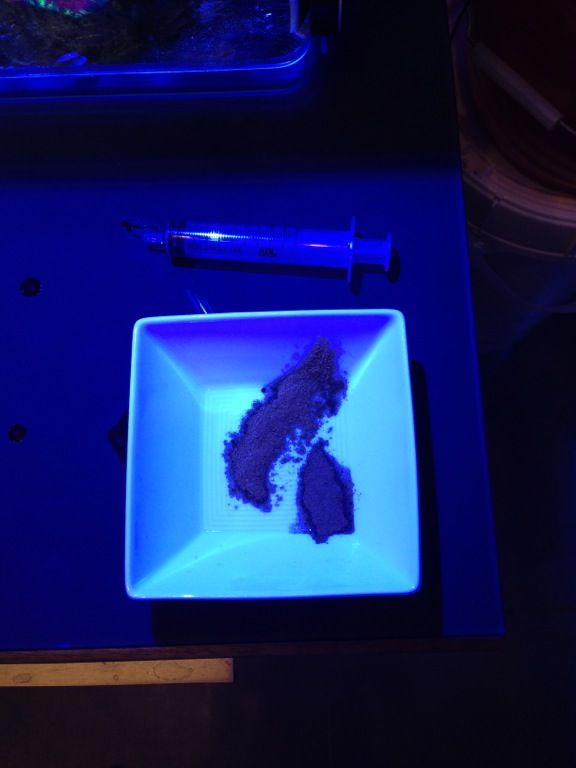 I ended up only using about half the syringe, but that's about 1/4 more than I usually ever feed at one time. I also fed the two brains several large pieces of PE mysis. 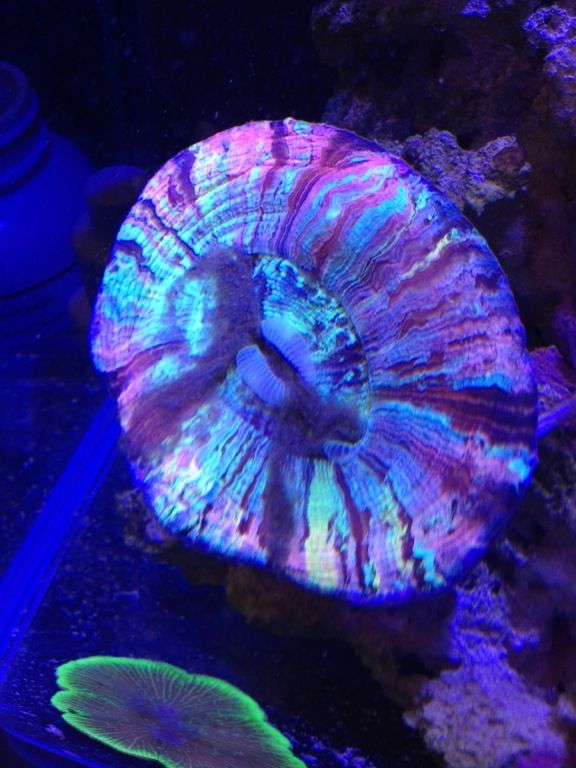 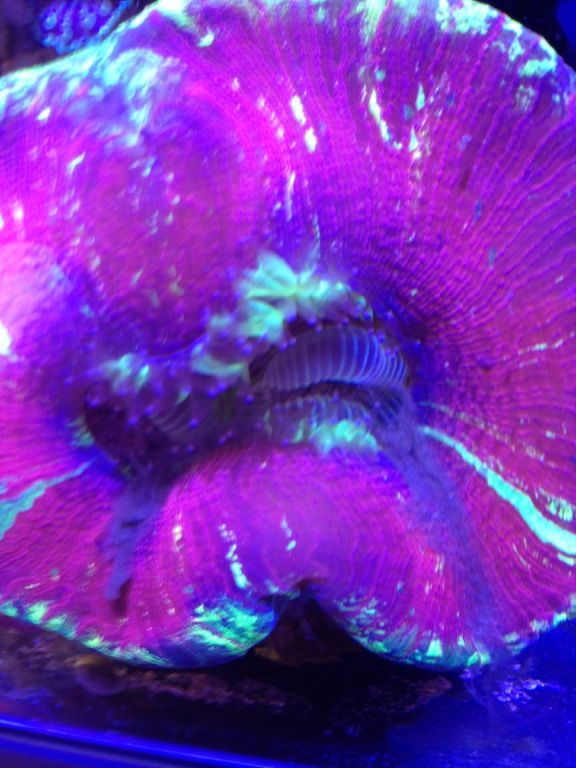  I usually take gobbling down as much as you can eat as a sign of coral health. So - if my test kits are to be believed (I'm suspicious of the alkalinity), this water change altered my levels by: dKH: +1.4 Calcium: +65ppm Magnesium: +60ppm Temp: -1.6 degrees Ammonia: no change Phos & nitrate: Not sure, but almost certainly drastically lowered them, probably took both down in to the undetectable range. It doesn't appear to have acutely harmed the corals in any way, as they looked and were behaving completely normally (save for the goniopora) in less than an hour. The stomatella snails in there faired perfectly well, and judging by the number of worms that popped out of the rocks when I started feeding, they didn't seem to mind either. The next question is whether or not this somehow 'shocked' the bacterial filtration system. I've added a good dump of organic matter that will shortly be converted to waste, so I'm going to test ammonia every day for the next week. I'll post the results here. |
|
#19
|
|||||
|
|||||
|
I like your water change system, and the bare bottom really make for a good plan on a pico tank. People often struggle with water quality in these pico tanks and you have it nailed down. That "kaleiascope" brain is WICKED. They are my favourite type of open brain.
 As far as shocking the system goes, it appears as if you are probably not shocking the system. Consistency is always important, and if the tank is used to getting 100% waterchanges then that is consistent for that tank's inhabitants. I'm a firm believer that different systems react differently because of different maintenance. People can essentially achieve the very same thing (a thriving reef) by performing a myriad of different maintenance schedules. Even taking a peek through TOTM threads on ReefCentral or here on CanReen you will see very different maintenance habits. However, if you're ever concerned, or you just want to experiment, you could always perform your waterchanges the same except add back 25-50% of the "old" saltwater. You would still get a thorough clean. I would suggest you put the water to reuse in a bucket on its own rather than allowing the corals to sit in it though. I'm not sure that is clear... so you would have say 50% of the water in one clean bucket and 50% of the water in the bucket holding the corals, then clean tank, add corals to tank, add water to tank from the clean bucket, and toss the water from the bucket that held the corals. You're definitely making me take a second look at the 5-gallon Fluval tank I have sitting in a closet... Last edited by Myka; 06-29-2013 at 03:20 PM. |
|
#20
|
|||||
|
|||||
|
Yah that open brain is wicked, I feel like I got away with theft though, it was ugly as sin when I bought it so I definitely did not pay the same kind of premium you often see them go for. I've never seen a brain with blue on it the way this one does.
And I definitely agree and a variety of methods working, what's important is the effect of what you are doing - how much light, water chemistry, flow, etc. how you achieve those things can be widely variable. I'm doing this to show with tests that doing a 100% water change, when done right, isn't dangerous to a system in terms of any of the metrics of "reef health" that we typically measure. I still see a lot of advice out there saying that it's dangerous to do it, but my hypothesis is that for the vast majority of animals out there, even a pretty significant sudden change in parameters like alk and calcium can be easily mitigated and adapted to by the organism. I'm not saying a change from dKH 6 to 12 is something you want to do often, but if you're using a good quality salt and keeping up with maintenance in general, you shouldn't ever get such a massive swing with a 100% change. It's my hypothesis that there's really only a few parameters that really, acutely matter from a biological functioning point of view - salinity being the most important, then probably pH and then after that temperature. Those are the ones that while a wide range of conditions are acceptable, marine organisms seem to need time to adjust to changes, and don't respond well to instantaneous shifts. All the rest of the major and trace ions only need to be held within a pretty wide range over long periods of time, but I don't think that sudden changes within that range (the key is the "within that range" part) once a week, or month, or year pose any threat to either the corals, motile animals, bacteria, or algae. I think to some people that sounds like a radical idea, but I'm going to try and show it using the tests available to us in the hobby as best I can. |